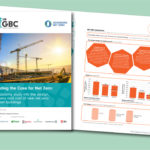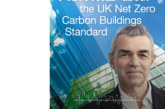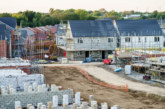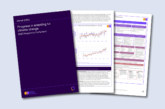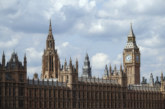The UK Green Building Council (UKGBC) has published a new report, ‘Building the case for net zero: A feasibility study into the design, delivery and cost of new net zero carbon buildings’.
Research earlier this year by JLL showed that more sustainable buildings can have increased rental value of 6-11% and lower void periods. We also know that taking action now to make buildings fit for the future guards against assets being stranded by future regulation and avoids costly retrofit at a later date. Last year, a report by Currie & Brown and Aecom for the Committee on Climate Change highlighted that designing in appropriate standards from the start is a fraction of the cost of trying to retrofit later — retrofits being in the order of five times more expensive for residential buildings and from five to more than ten times higher for commercial buildings.
With expert input from engineers, designers and cost consultants, this new report takes a lucid look at the implications of designing for net zero today.
The study looked at two real-life buildings at design stage, one residential block and one office building. The team considered the base designs and produced two further design iterations for each, one ‘intermediate’ scenario, looking to meet 2025 net zero performance targets and one ‘stretch’ scenario with 2030 targets in mind. The targets used were drawn from work undertaken by RIBA, LETI and UKGBC, covering embodied and operational carbon.
To meet the 2025 targets in the intermediate scenario, the residential block design had to be altered by replacing traditional gas boilers with air source heat pumps, improving fabric insulation, and reducing glazing areas to minimise heat loss. The office building design had to be altered by replacing a conventional steel and concrete structure with hybrid steel and cross-laminated timber in the superstructure, removing some fitout finishes like suspended ceilings, and introducing active chilled beams. The cost analysis found that, for the residential building, the cost uplift was only 3.5% and for the office building it was 6.2%. These costs are relatively marginal and more than likely to be at least recouped through associated increases in rental and capital value, plus reduced operational costs.
The study went one step further by calculating the costs required to achieve the 2030 targets in a ‘stretch’ scenario. Unsurprisingly, the design changes required to meet this resulted in a more significant uplift in capital expenditure. The analysis for the residential building found a cost uplift of 5.3%, while for the office building the study found the uplift could be as low as 8% or as high as 17%. This highlights the need for supply chain innovation and investment early on, so as to scale the market for low-carbon solutions, thereby bringing down costs over time.
The report has been co-authored by UKGBC, JLL and Hoare Lea, with expert insights from Alinea, Bennetts Associates, Cast, Cundall, EPR Architects, Heyne Tillett Steel, Landsec, Legal & General and Robert Bird Group.
Julie Hirigoyen, Chief Executive at UKGBC, said: “We’ve known for some time that taking action to make buildings greener today will add value and save costs in the longer term. But the precise cost benefit analysis of achieving net zero carbon standards on new buildings today has remained elusive.
“This study provides long-awaited evidence that building today to the standards of energy and carbon efficiency required by 2025 doesn’t have to cost a fortune and is likely to be offset by enhanced value (e.g. higher rents, reduced running costs, higher sale price, reduced offsetting costs etc) in due course. But unsurprisingly, when it comes to building to 2030 standards of efficiency, the current capital cost increase on a baseline 2020 design is more challenging to accommodate. To overcome this, we need a long-term consistent regulatory trajectory that tightens standards over time so as to provide the certainty and level playing field required for the supply chain to innovate and costs to come tumbling down. Yet again, we are reminded that more visionary policy-making and bold industry leadership must go hand in hand in the quest for net zero carbon outcomes.”
This project forms part of UKGBC’s Advancing Net Zero Programme, which has been made possible this year thanks to the generous support of our Lead Partner the Redevco Foundation, and our Programme Partners BAM Construct UK, Berkeley Group, Grosvenor Britain & Ireland, Hoare Lea and JLL UK.
You can download a copy of the ‘Building the case for net zero: A feasibility study into the design, delivery and cost of new net zero carbon buildings’ report here.

